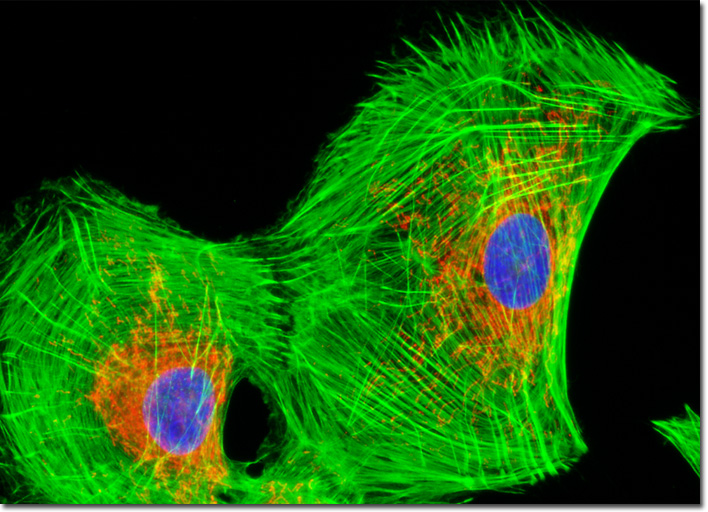Fluorescence Digital Image Gallery
Rat Jejunum Myenteric Plexus Enteroglial Cells (EGC/PK060399egfr)
|
Mitochondria comprise as much as ten percent of the volume of eukaryotic cells. The organelles function chiefly in energy production, but are also involved in a variety of other metabolic functions. The number of mitochondria present in a cell depends largely on the type of the cell and its stage in the cell cycle. Since the organelles possess their own genetic apparatus, mitochondria are self-replicating. The specialized structures have an average lifespan of approximately 10 days. The mitochondria and filamentous actin present in an EGC cell culture (illustrated above) were targeted with MitoTracker Red CMXRos (red fluorescence) and Alexa Fluor 488 conjugated to phalloidin (green fluorescence), respectively. In addition, the culture was counterstained for DNA with DAPI. Images were recorded in grayscale with a QImaging Retiga Fast-EXi camera system coupled to an Olympus BX-51 microscope equipped with bandpass emission fluorescence filter optical blocks provided by Omega Optical. During the processing stage, individual image channels were pseudocolored with RGB values corresponding to each of the fluorophore emission spectral profiles. |
© 1995-2025 by Michael W. Davidson and The Florida State University. All Rights Reserved. No images, graphics, software, scripts, or applets may be reproduced or used in any manner without permission from the copyright holders. Use of this website means you agree to all of the Legal Terms and Conditions set forth by the owners.
This website is maintained by our
|
